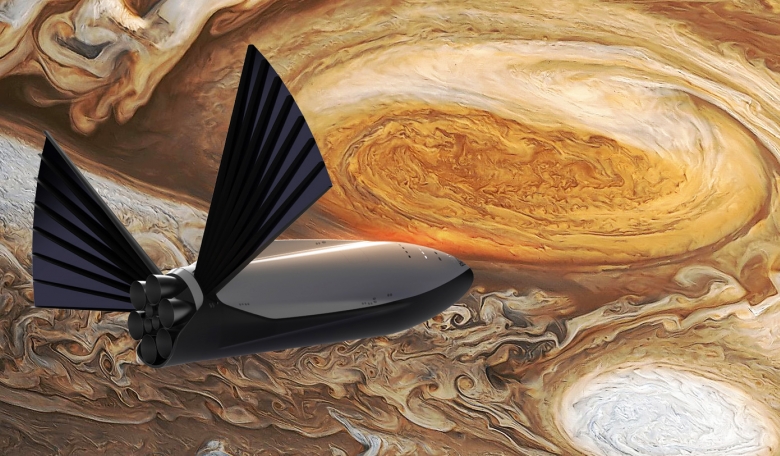SpaceX entrepreneur Elon Musk brought high drama and a remarkable vision of the future to the International Astronautical Congress (IAC) being held in the Mexican ‘Silicon Valley’ city of Guadalaraja this week.
Musk took centre stage on Tuesday to outline his plans to establish a human colony on Mars at an affordable ticket price of US$200,000.
Speaking to an audience of around 2,000 conference delegates, students and media - many of whom had queued for around 90 minutes to grab a seat in the cavernous presentation hall - his presentation was punctuated with woops and cheers.
Mr Musk, who founded private spaceflight company SpaceX in 2002, said his colonisation plan uses a fully reusable transportation system that would take 100 people and 80 days to get to Mars and eventually in as little as 30 days.
The system consists of a spaceship that is refuelled with methane and oxygen in Earth orbit and also on Mars after landing there. He explained that to achieve the target US$200,000 price the entire transportation system has to be reusable.
He suggested Mars could eventually have a colony of a million people which would make it self-sustaining and that, with his plan, this could be achieved in a 100 years.
"I want to make Mars seem possible, something we can do in our lifetimes - and that anyone can go if they wanted to,” he said.
According to a timeline outlined by Mr Musk in his presentation the first Mars flight could take place in 2022 in a spacecraft he would like to name ‘The Heart of Gold’, after the starship in Douglas Adams' book, ‘The Hitchhiker's Guide to the Galaxy’.
A prototype spaceship is planned to make test flights in four years, initially going into space, but not into orbit. Initially SpaceX will used Pad 39A at Kennedy Space Center which is being leased from NASA and later a second launch base developed in Texas.
Just prior to the IAC, Mr Musk announced that SpaceX had carried out its first test of the Raptor rocket engine that will power the spaceship and the booster that puts it into orbit. A prototype booster fuel tank has also been built and tested and Mr Musk showed a picture of the enormous tank with staff standing next to it.
The combination of the booster and spaceship is called the Interplanetary Transportation System (ITS) and together they stand 122 m tall, bigger than an Apollo-era Moon programme Saturn V rocket. The booster will have 42 Raptor engines arranged in concentric circles.
The spaceship itself will have nine Raptor engines, carry 450 tonnes of crew, life support and cargo, and would be designed as a “fun” place to live and work. Initial development is being funded by profit from SpaceX and Mr Musk's own wealth.
SpaceX also plans to launch its first Red Dragon to Mars in a couple of years when the Earth and Mars are closest, and at regular intervals thereafter, effectively offering its own ‘shuttle’ service for delivering payloads and science experiments to the red planet.
Asked whether he would be on his first crewed spaceship to Mars, Mr Musk was a little more hesitant, saying there were “pros and cons”, especially as the first trip would probably be the most dangerous.
Report from IAC 2016 by Clive Simpson. Mr Musk’s full presentation can be viewed by clicking here: SpaceX Mars











